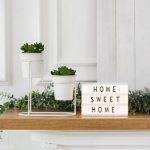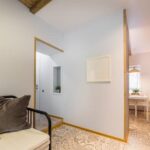Are you looking to elevate the look and feel of your home? In this article, we will explore the art of home interior decoration and provide valuable insights on how to create a space that is not only visually pleasing but also functional and reflective of your personal style. Whether you are a first-time homeowner or simply looking to refresh your living space, this guide will help you navigate the world of interior design with confidence.
Understanding Your Space is crucial when it comes to interior decoration. Assessing the size, layout, and natural light of your home will lay the foundation for all your design decisions. Finding Your Style is also essential, as it sets the tone for the entire decorating process. We will delve into different interior design styles and help you identify your personal preferences.
Next, we will discuss Color Palette selection and how choosing the right color scheme can reflect your style and personality. Additionally, we’ll provide tips for Furniture Selection that complements your space and style, as well as incorporating Decorative Elements to add personality and warmth to your home. Lighting is another key aspect of interior decoration that often gets overlooked, so we’ll explore how to create the right ambiance through various lighting options.
Furthermore, if you’re on a budget, our DIY Tips section offers budget-friendly ideas for sprucing up your home decor without breaking the bank. Finally, Maintenance and Upkeep tips ensure that your home’s beauty and functionality are maintained over time. So let’s embark on this journey into creating a beautiful living space that truly reflects who you are.
Understanding Your Space
When it comes to home interior decoration, one of the most crucial aspects is understanding your space. Before diving into the world of design styles and color palettes, it’s essential to assess the size, layout, and natural light of your home. By doing so, you can create a cohesive and harmonious interior that not only looks beautiful but also functions well for your lifestyle.
Start by measuring each room in your home to understand its dimensions. This will help you determine the scale of furniture and decor that will best fit each space. Additionally, consider the layout of each room and how you currently use them. Are there any areas that feel cramped or underutilized? Understanding the flow and function of your space will allow you to make informed decisions when it comes to decorating.
Natural light is another important factor to consider when assessing your space. Take note of which rooms receive the most sunlight throughout the day, as well as any areas that may be lacking in natural light.
This will influence your color palette choices and even impact where you place certain furniture pieces or decorative elements. By understanding your space in terms of size, layout, and natural light, you can create a personalized and functional interior that reflects your style and meets your practical needs.
Once you have a clear understanding of your space, you can move on to exploring different interior design styles and identifying your personal preferences. With this foundation in place, you’ll be better equipped to make informed decisions on how to do home interior decoration that suits both your aesthetic tastes and practical requirements.
Finding Your Style
When it comes to home interior decoration, finding your style is a crucial step in creating a space that reflects your personality and taste. There are various interior design styles to explore, from minimalist and modern to traditional and eclectic.
Take the time to research different styles, look through interior design magazines, visit showrooms, and browse online inspiration to gather ideas that resonate with you. Pay attention to the colors, patterns, textures, and overall aesthetic of each style to identify what speaks to you the most.
Identifying your personal preferences is essential in creating a cohesive and harmonious home decor. Consider elements such as your favorite colors, patterns, materials, furniture shapes, and decorative accents. Think about the atmosphere you want to create in your home – whether it’s cozy and inviting or sleek and sophisticated. Understanding your personal preferences will guide you in making decisions regarding color palette, furniture selection, decorative elements, and overall ambiance.
Once you have explored different interior design styles and identified your personal preferences, it’s important to find a balance between staying true to your style while also considering the practicality of your choices. Keep in mind the size and layout of your space, as well as any existing architectural features that may influence your design decisions.
By finding your style and understanding your personal preferences, you can create a home interior decoration that not only looks visually appealing but also feels like an authentic reflection of who you are.
| Interior Design Style | Description |
|---|---|
| Minimalist | A clean and uncluttered style characterized by simplicity and functionality. |
| Traditional | Classic elegance with rich colors, ornate details, and timeless furnishings. |
| Modern | Clean lines, minimalism, neutral colors, and an emphasis on form over ornate details. |
Color Palette
Selecting the right color palette for your home is a crucial step in interior decoration. The colors you choose can have a significant impact on the overall look and feel of your space.
When deciding on a color scheme, it’s important to consider not only your personal style but also the mood you want to create in each room. Warm tones like red, yellow, and orange can create a cozy and inviting atmosphere, while cool tones like blue and green can evoke a sense of calm and relaxation.
One popular approach to choosing a color scheme is the use of the 60-30-10 rule. This guideline suggests using 60% of a dominant color (usually on the walls), 30% of a secondary color (for upholstery, furniture, or drapery), and 10% of an accent color (for accessories and decor). This balance helps create visual interest while maintaining cohesion throughout the space.
Another consideration when selecting a color palette is the natural light in each room. Rooms with ample natural light can handle darker or more saturated colors, while rooms with limited natural light may benefit from lighter shades to prevent them from feeling cramped or gloomy. Taking these factors into account will help you choose colors that not only reflect your personal style but also enhance the functionality and ambiance of your home.
When choosing your color scheme, don’t be afraid to experiment with different combinations and shades. Consider creating mood boards or using online tools to visualize how different colors will work together in your space. Remember, the goal is to create a harmonious and visually appealing environment that reflects who you are.
| Aspect | Description |
|---|---|
| Color Psychology | Understanding how different colors can evoke specific emotions and moods. |
| Natural Light Consideration | Adapting your color choices based on the amount of natural light in each room. |
| Experimentation | Encouraging readers to try out different combinations and utilize visualization tools for their chosen color schemes. |
Furniture Selection
Consider Your Space and Lifestyle
When it comes to selecting furniture for your home, it’s important to consider the size and layout of your space, as well as your lifestyle. For smaller spaces, multifunctional furniture pieces or those with built-in storage can be a great choice to maximize space. Additionally, consider how you use each room and choose furniture that complements your daily activities. For example, if you love entertaining guests, prioritize comfortable seating options in your living room.
Quality Over Quantity
When selecting furniture for your home, it’s crucial to prioritize quality over quantity. Investing in well-made furniture pieces may cost more initially, but they will last longer and withstand daily wear and tear. Look for durable materials and solid construction when choosing furniture to ensure longevity. Additionally, timeless and versatile pieces can stand the test of time and adapt to changing design trends.
Balance and Proportion
Achieving the right balance and proportion is essential when selecting furniture for your home. Ensure that the scale of each piece complements the size of your space without overwhelming it. Mix larger statement pieces with smaller accent pieces to create visual interest and depth in your rooms. Additionally, consider the flow of movement within each room and place furniture in a way that allows for easy navigation while maintaining a cohesive look.
By following these tips for selecting the right furniture pieces that complement your space and style, you can create an inviting and functional home interior that truly reflects your personality and taste.
Decorative Elements
When it comes to home interior decoration, decorative elements play a crucial role in adding personality and warmth to your space. Whether it’s an eye-catching piece of artwork, a unique accent pillow, or a stylish area rug, these elements can truly elevate the look and feel of your home. Here are some tips for incorporating decorative elements into your home:
- Selecting Artwork: When choosing artwork for your home, consider pieces that resonate with you personally. Whether it’s a vibrant abstract painting or a collection of family photographs, art should reflect your personality and style. Consider the size and scale of the artwork in relation to the wall space where it will be displayed.
- Adding Texture: Texture can add depth and interest to your home decor. Consider incorporating different textures through throw blankets, pillows, and decorative objects such as woven baskets or ceramic vases. Mixing textures can create a layered and inviting look in any room.
- Personal Touches: Adding personal touches to your home decor can make it feel distinctive and meaningful. Display items that hold sentimental value, such as souvenirs from travels or heirloom pieces handed down through generations. These personal touches can tell a story and add character to your space.
Incorporating decorative elements is an essential part of creating a cohesive and inviting home interior. By carefully selecting artwork, adding texture, and infusing personal touches, you can transform your space into a reflection of your unique style and personality.
Lighting
When it comes to home interior decoration, lighting plays a crucial role in creating the right ambiance and functionality within a space. The proper use of lighting can completely transform the look and feel of a room, making it essential to carefully consider various lighting options when decorating your home.
Here are some important factors to consider when choosing the right lighting for your home:
- Assess the natural light: Before selecting your artificial lighting options, it’s important to take into account the natural light that enters each room. Consider how much sunlight each room receives throughout the day and where the light enters from. This will help you determine which areas may need more artificial lighting to compensate for any lack of natural light.
- Layering your lighting: To create a well-balanced and inviting atmosphere, it’s important to incorporate different layers of lighting within a room. This can include ambient or general lighting, task lighting for specific activities such as reading or cooking, and accent lighting to highlight architectural features or decor pieces.
- Choosing the right fixtures: Once you’ve determined the type of lighting needed for each space, it’s time to select the appropriate fixtures. From chandeliers and pendant lights to wall sconces and floor lamps, there are numerous options available to suit different styles and functions.
By carefully considering these factors and taking thoughtful steps when selecting and installing various lighting options, you can effectively enhance the ambiance and functionality of your home’s interior design while also showcasing your personal style.
DIY Tips
Decorating your home doesn’t have to break the bank. There are plenty of budget-friendly DIY ideas that can spruce up your home decor and give it a fresh new look. With a little creativity and some basic tools, you can transform your space without spending a fortune.
Upcycling Furniture
One great way to save money on home decor is to upcycle old or worn-out furniture. Whether it’s a coat of paint, new hardware, or reupholstering, giving new life to old pieces can completely change the look and feel of a room. Look for thrift store finds or items you already own that could use a little TLC.
DIY Artwork
Instead of splurging on expensive artwork, consider creating your own DIY pieces. You don’t have to be an artist to make something beautiful for your walls. Look for inspiration online and get creative with paint, fabric, or even found objects to make unique and personalized art for your home.
Accessorizing With Thrift Finds
Thrift stores and flea markets are treasure troves for affordable home decor accessories. From vases and candle holders to picture frames and decorative objects, you can find unique items that add character to your space without breaking the bank. Get creative with mix-and-match styles for an eclectic look that reflects your personality.
By incorporating these DIY tips into your home interior decoration plans, you can achieve a stylish and inviting space while staying within your budget. With a little imagination and effort, you can create a beautiful home that reflects your personal style without spending a fortune.
Maintenance and Upkeep
In conclusion, effective home interior decoration is not just about creating a beautiful space, but also about maintaining its beauty and functionality over time. By following the tips and guidelines outlined in this article, you can ensure that your home remains a reflection of your personal style and tastes for years to come.
Understanding your space, finding your style, choosing the right color palette, selecting the perfect furniture pieces, incorporating decorative elements, and creating the right ambiance through lighting are all essential components of home interior decoration. However, equally important is the maintenance and upkeep of these elements to preserve their beauty and functionality.
By regularly cleaning and organizing your space, repairing any damages or wear and tear, updating decor as needed, and staying on top of maintenance tasks such as painting or refinishing furniture, you can prolong the life of your home decor. Additionally, budget-friendly DIY tips can help you refresh your space without breaking the bank. With dedication and attention to detail, you can ensure that your home continues to be a welcoming and stylish environment for yourself and others.
Frequently Asked Questions
What Are the Steps to Interior Decorating?
The steps to interior decorating involve first setting a budget and identifying the purpose of the space. Then, it’s important to choose a color scheme, select furniture and décor, and finally, arrange everything in the room.
How Do I Get Started in Interior Decorating?
To get started in interior decorating, it’s helpful to educate yourself about design principles and styles through books, online resources, or courses. Gain hands-on experience by practicing with your own space or offering to help friends and family.
What Are the Basics of Interior Decoration?
The basics of interior decoration include understanding the importance of balance, harmony, and contrast in a room. It’s also essential to consider factors like scale, proportion, and lighting when choosing furniture and arranging décor. Additionally, creating a focal point can make a significant impact in a space.

I’m thrilled to be your companion on this exciting journey through the world of home decor and design. With a passion for turning houses into homes and a keen eye for the finer details, I’m here to help you transform your living spaces into beautiful, functional, and meaningful havens.





